Here are all the details about Tabebuia Tree Care, Types, & Growing Information that will give a detailed insight about everything!

This article will give you all the information you need about Tabebuia Tree Care, Types, & Growing Information! Read on to know all the details about this beautiful tree!
Here’s all you need to know about mule palm tree
Tabebuia Tree Information
This genus of flowering plants includes trees and large shrubs. It is related to the Bignoniaceae family along with Jacaranda mimosifolia and Campsis radicans. This tree produces tubular blooms dangling in clusters, because of the shape and color of the blooms, it is called trumpet Tree.
USDA Zones: 9-11
Propagating Tabebuia Tree
You can propagate the tree from both seeds and cuttings at the beginning of spring. It is easy to grow and does best in plenty of bright light.
Best Tabebuia Varieties
1. Yellow Trumpet Tree

Botanical Name: Tabebuia argentea
It grows up to 30-60 feet tall and flowers in late winter or early spring, producing bright yellow funnel-shaped blooms.
2. Cuban Pink Trumpet Tree
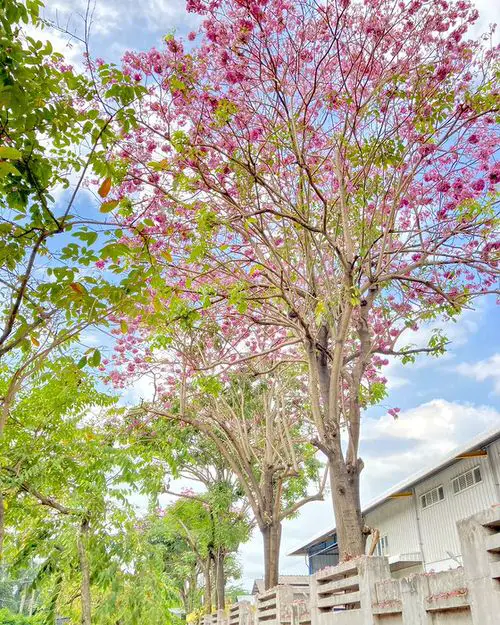
Botanical Name: Tabebuia pallida / Tabebuia heterophylla
Grown as a large shrub, it reaches up to 30-40 feet tall. Blooms open in a purple-pink hue. For best growth, make sure it gets full sun exposure.
3. Gold Trumpet Tree
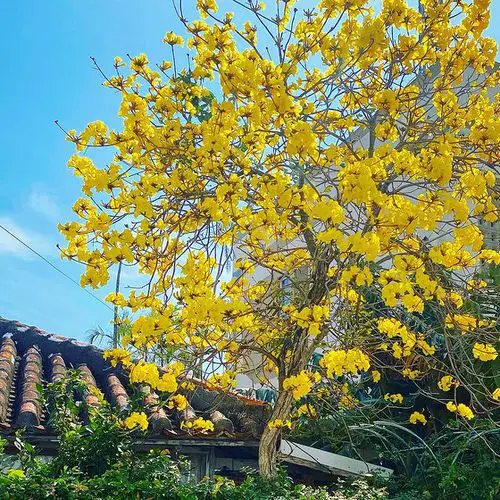
Botanical Name: Tabebuia chrysotricha
This tree grows up to 25-50 feet tall and produces golden-yellow blooms with maroon stripes during spring.
4. Purple Trumpet Tree
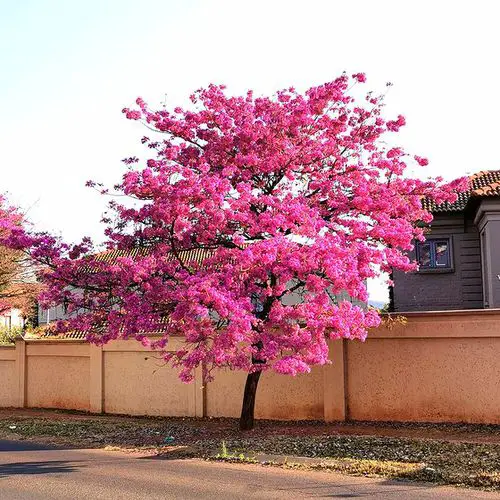
Botanical Name: Tabebuia impetiginosa
This semi-evergreen variety grows up to 25-50 feet tall. The blooms appear in late winter or spring in white to light pink and purple hues.
5. Pink Trumpet Tree
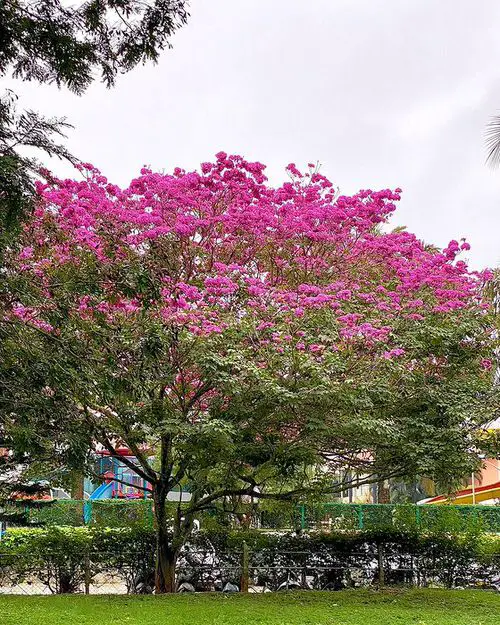
Botanical Name: Tabebuia avellanedae
Also popular as Pink Lapacho, it grows large, tubular pink or magenta blooms from January and July.
6. Yellow Lapacho

Botanical Name: Tabebuia serratifolia
This trumpet tree variety has smooth bark, yellow blooms, and stellate hairs on the calyx. It is the national tree of Brazil.
7. Caribbean Trumpet Tree
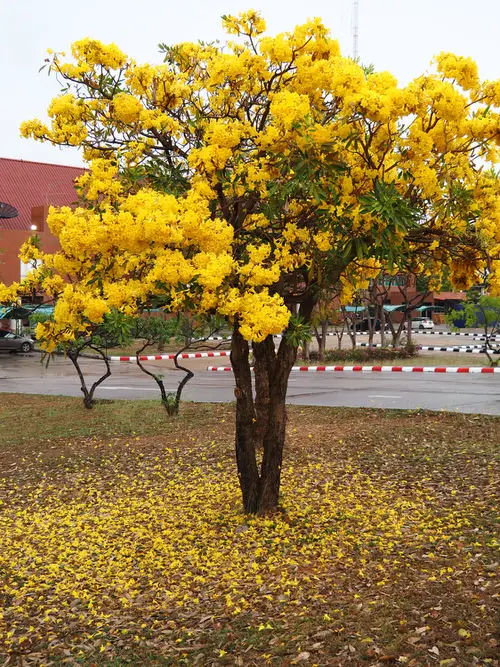
Botanical Name: Tabebuia aurea
Also popular as the silver trumpet tree, this dry-season deciduous specimen produces bright yellow blooms.
8. Silver Trumpet Tree
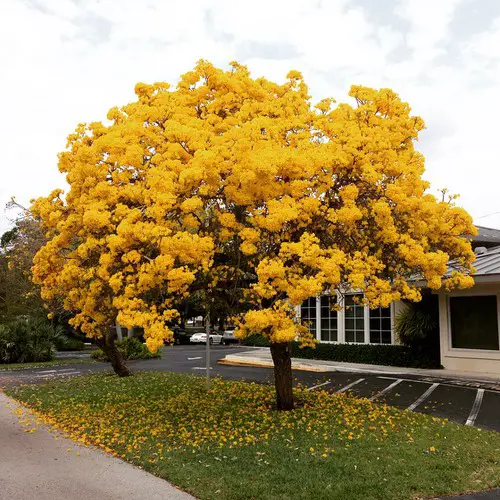
Botanical Name: Tabebuia caraiba
This tree reaches a height of 15-25 feet. Its leaves are divided into narrow leaflets that take a stunning yellow hue in autumn.
9. Corteza Amarilla
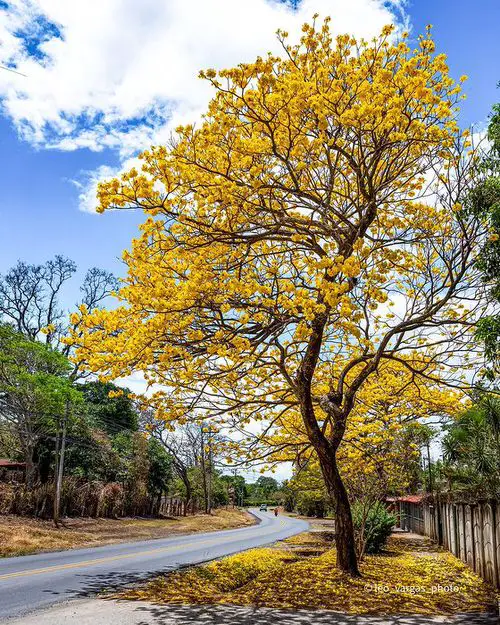
Botanical Name: Tabebuia ochracea
This timber tree showcases yellow blooms in spring and is often confused with the golden trumpet tree.
Requirements for Growing Tabebuia
Light
The majority of species of this tree prefer full to partial sun and do best in 3-5 hours of direct sunlight. It favors warm locations without any freezing.
Soil
The tree does best in a well-draining growing medium. However, once established, it will take care of its own in any type of soil.
Water
Young plants need regular watering, mainly in the first few months. When it will mature, you don’t have to worry about its watering requirements.
Temperature
Tabebuia needs warm weather to thrive well. Keep in mind that a freezing environment can be fatal for it. In cool climates, grow it in a large pot and transfer it indoors in winter.
Tabebuia Care
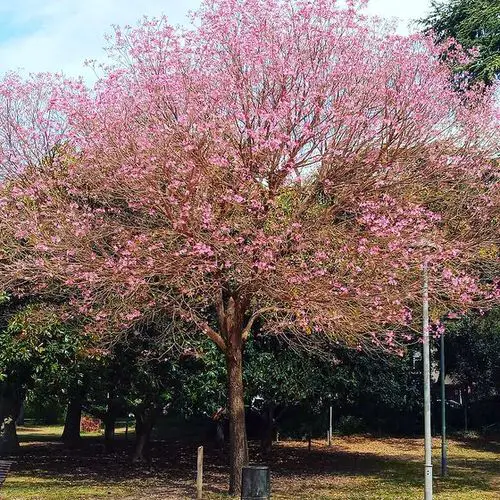
Fertilizer
In the growing period, feed the plant with a balanced liquid fertilizer, once in 1-2 months, to give a boost in growth. Once established, it will take care of its own.
Pruning
Prune the plant in dormancy to maintain the desired shape and size. Remove damaged or dead branches and stems for promoting full bushier growth.
Pest and Diseases
Tabebuia trees can be affected by the tobacco mosaic virus, which leads to blotching and stunted growth. Once affected, it cannot be recovered.
Use neem oil for repelling aphids and mealybugs, miticide for spider mites, and remove slugs and snails by hand.
Toxicity
All parts of the trumpet tree are mildly toxic including seeds, roots, foliage, and flowers. The plant has alkaloids that cause dry mouth, muscle weakness, hallucinations, and dilated pupils if ingested.
Tabebuia Tree Uses
The leaves and roots of the Tabebuia rosea are popular for curing fevers, swelling, tonsil inflammation, and body pains.



Cam you PLEASE help me? I bought some Tabebuia Avellandae seeds from India to Australia and I have tried EVERYTHING to germinate the seeds and nothing has worked! I’ve tried putting the whole seed in soil and covered in platic bag in sun, and the swwd just went mouldy. I tried taking the dark seeds out of the shell thing and planting that and still nothing 😔